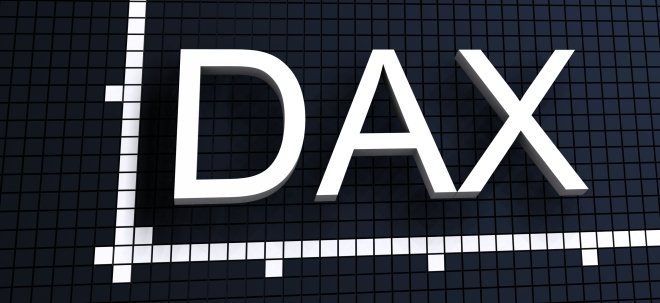Bunker Fuel Market to Reach $192.2 billion, Globally, by 2034 at 4.4% CAGR: Allied Market Research
WILMINGTON, Del., Oct. 29, 2025 /PRNewswire/ -- Allied Market Research published a report, titled, "Bunker Fuel Market by Type (High Sulfur Fuel Oil, Low Sulfur Fuel Oil, Marine Gas Oil, Bio-LNG, Methanol, Ammonia, Hydrogen, and Others), Commercial Distributor (Oil Majors, Large Independent, and Small Independent), and Application (Bulk Carrier, Oil Tanker, General Cargo, Container Lines, Chemical Tanker, Fishing Vessels, Gas Tankers, and Others): Global Opportunity Analysis and Industry Forecast, 2025-2034". According to the report, the bunker fuel market was valued at $126.1 billion in 2024, and is estimated to reach $192.2 billion by 2034, growing at a CAGR of 4.4% from 2025 to 2034.

Download PDF Brochure: https://www.alliedmarketresearch.com/request-sample/A01813
Growth of LNG bunkering infrastructure
The growth of LNG bunkering infrastructure is emerging as one of the most transformative developments in the marine fuel sector. The shipping industry has witnessed a steady increase in ports capable of supplying liquefied natural gas (LNG) as a bunker fuel, driven largely by stricter environmental regulations such as the IMO 2020 sulfur cap and long-term decarbonization targets. LNG's lower sulfur, nitrogen oxide, and particulate emissions make it a preferred compliance fuel in Emission Control Areas (ECAs) and for operators seeking to reduce their overall greenhouse gas footprint. This transition is not just limited to major global hubs; secondary and regional ports are also beginning to invest in LNG storage tanks, dedicated bunkering vessels, and fueling infrastructure to cater to both deep-sea and short-sea shipping operators. In December 2022, the Wilhelmshaven floating LNG terminal was officially opened—receiving its first cargo on 15 December and commencing regular operations by January 2023. Moreover, in January 2023, the first of two LNG regasification terminals near Lubmin was brought online to bolster energy security following Russia's invasion of Ukraine.
Increase in low-sulfur fuel demand
The surge in low-sulfur fuel demand has been one of the most defining shifts in the bunker fuel market since the enforcement of the International Maritime Organization's (IMO) 2020 regulation, which limits the sulfur content in marine fuels to 0.5% outside Emission Control Areas (ECAs) and 0.1% within them. This mandate led to a large-scale transition from high-sulfur fuel oil (HSFO) to very low sulfur fuel oil (VLSFO) and marine distillates such as marine gas oil (MGO). Ship operators that opted not to install exhaust gas cleaning systems (scrubbers) were compelled to switch to these compliant fuels, immediately creating a surge in demand. Refiners responded by reconfiguring operations to produce more low-sulfur blends, while traders and suppliers adjusted supply chains to ensure consistent availability at major bunkering hubs. In September 2024, the U.S. ultra-low sulfur diesel (ULSD) plunged to a three-year low (~$2.06/gal), as demand softened amid economic slowdowns in the U.S. and China; LNG trucking gains in China also dented diesel demand.
Report coverage & details:
Report Coverage | Details |
Forecast Period | 2025–2034 |
Base Year | 2024 |
Market Size in 2024 | $126.1 billion |
Market Size in 2034 | $192.2 billion |
CAGR | 4.4 % |
No. of Pages in Report | 499 |
Segments Covered | Type, Commercial Distributor, Application, and Region |
Drivers | Increase in demand for commercial shipping vessels |
Surge in Offshore Oil and Gas Activities | |
Opportunity | Investments in Green Shipping |
Development of Floating Bunkering Stations | |
Restraint | Risk of Oil Spills and Pollution |
Increase in demand for Biofuel
The surge in demand for biofuel in the bunker fuel market is gaining significant momentum as the shipping industry accelerates its decarbonization efforts. Biofuels, particularly B100 (100% bio-based fuel derived from renewable feedstocks such as used cooking oil, waste animal fats, or plant oils), are being trialed and increasingly adopted by ship operators seeking to reduce greenhouse gas emissions without making extensive engine modifications. Biofuels are often blended with conventional marine fuels (e.g., B20, B30, B50) or used in pure form in compatible engines, making them an attractive near-term solution. This compatibility has positioned biofuels as a bridge fuel while the industry works toward longer-term zero-carbon options like ammonia, hydrogen, or synthetic fuels. In June 2022, India amended its National Biofuel Policy, advancing the target for 20 % ethanol blending (E20) from 2030 to 2025–26, while expanding eligible feedstocks. Moreover, in December 2023, India's ethanol production capacity—mainly from molasses and grain sources—reaches 12.44 billion liters, enabling ethanol blending targets and delivering CO₂ savings (31.8 mmt) and forex benefits (₹540 billion).
Procure Complete Report (499 Pages PDF with Insights, Charts, Tables, and Figures) @ https://www.alliedmarketresearch.com/checkout-final/bunker-fuel-market
Import Export Analysis in Personal Care Emulsifiers market
Imports
Major bunkering hubs such as Singapore remained the single largest bunkering port and continued to show steady sales through 2022–2024 while also scaling up low-carbon blends — Singapore's authority publishes monthly bunker sales and reported that alternative bunker fuel sales exceeded about 1.34 million tons in 2024, signaling growing but still limited uptake of biofuels and methanol blends. At the country level, China's feedstock shifts and quota adjustments produced big swings in traded fuel-oil flows: China's total fuel-oil imports rose sharply in 2023 to roughly 22.4 million tons (a near-decade high for that year), and bonded bunker imports for the first nine months of 2024 were reported at about 3.36 million tons, up strongly year-on-year as domestic supply and quota dynamics changed.
Exports
China and other major East Asian refining hubs remained important exporters of low-sulfur marine fuels and distillates, in the trade related activities of bunker fuels. Attacks in the Red Sea prompted vessel diversions around southern Africa, extending voyage distances and increasing fuel requirements. Major bunkering hubs like Singapore reached record volumes selling 54.92 million metric tons, up from 51.82 million metric tons in 2023. Similarly, Rotterdam saw a strong first quarter with bunker sales rising 12% to 2.16 million tons, though its overall annual volumes declined by 1%, affected by soft demand for very low sulfur fuel oil (VLSFO). In January 2025, high-sulfur fuel oil (HSFO) rebounded in popularity, with Singapore reporting a 21% increase to 20.15 million tons in 2024, while VLSFO sales declined by 4% to 29.58 million tons. Alternative fuels namely biofuel blends and LNG surged, topping 1.34 million tons (double 2023 levels), with biofuels at 880,000 tons (+69%) and LNG at over 460,000 tons (more than quadruple).
Connect To Industry Expert: https://www.alliedmarketresearch.com/connect-to-analyst/A01813
Key Players: -
- Petroliam Nasional Berhad (PETRONAS),
- BP p.l.c.
- Hindustan Petroleum Corporation Limited
- Indian Oil Corporation Ltd
- LUKOIL
- Shell plc
- Neste
- Exxon Mobil Corporation
- TotalEnergies
- Chevron Corporation
- BUNKER HOLDING
- Vitol Bunkers
The report provides a detailed analysis of these key players in the global bunker fuel industry. These players have adopted different strategies such as new product launches, collaborations, expansion, joint ventures, and agreements to increase their market share and maintain dominant shares in different regions. The report is valuable in highlighting business performance, operating segments, product portfolio, and strategic moves of market players to highlight the competitive scenario.
Recent Key Developments
- In May 2024, NYK Line collaborated with the Global Centre for Maritime Decarbonization (GCMD), based in Singapore, for a six-month project to trial marine biofuel for bunkering. The companies are expected to test a biofuel blend comprising 24% fatty acid methyl esters (FAME) and very low sulfur fuel oil (VLSFO) on a short-sea vehicle carrier, making stops at various ports.
- In April 2024, French oil major TotalEnergies set up a joint venture with the Oman National Oil Company to supply liquified natural gas as a marine fuel. Marsa LNG Gas will cover upstream gas production and downstream gas liquefaction. LNG production is expected to start in the first quarter of 2028.
Trending Reports in Energy & Power Industry:
Marine Bunker Oil Market Opportunity Analysis and Industry Forecast, 2024 - 2033
Singapore Bunker Fuel Market Opportunity Analysis and Industry Forecast, 2021-2030
LNG Carrier Market Opportunity Analysis and Industry Forecast, 2023 - 2033
Bio-LNG Market Size, Share, Competitive Landscape and Trend Analysis Report, 2022 - 2032
Planned LNG Market: Global Opportunity Analysis and Industry Forecast, 2020-2030
LNG Bunkering Market Size, Share Analysis and Industry Forecast, 2020-2027
Floating LNG Power Vessel Market: Global Analysis and Industry Forecast, 2023-2032
About us:
Allied Market Research (AMR) is a full-service market research and business-consulting wing of Allied Analytics LLP based in Wilmington, Delaware. Allied Market Research provides global enterprises as well as medium and small businesses with unmatched quality of 'Market Research Reports' and 'Business Intelligence Solutions'. AMR has a targeted view to provide business insights and consulting to assist its clients to make strategic business decisions and achieve sustainable growth in their respective market domain.
Contact us:
David Correa
1209 Orange Street,
Corporation Trust Center,
Wilmington, New Castle,
Delaware 19801 USA.
Int'l: +1-503-894-6022
Toll Free: +1-800-792-5285
Fax: +1-800-792-5285
help@alliedmarketresearch.com
Web: https://www.alliedmarketresearch.com/reports-store/energy-and-power
Follow Us on | Facebook | LinkedIn | YouTube
Logo: https://mma.prnewswire.com/media/636519/Allied_Market_Research_Logo.jpg
![]() View original content:https://www.prnewswire.com/news-releases/bunker-fuel-market-to-reach-192-2-billion-globally-by-2034-at-4-4-cagr-allied-market-research-302598042.html
View original content:https://www.prnewswire.com/news-releases/bunker-fuel-market-to-reach-192-2-billion-globally-by-2034-at-4-4-cagr-allied-market-research-302598042.html
SOURCE Allied Market Research

